Cheese Cake with Plain Paste
Katie Maxwell, Visitor Services and Design Coordinator
It has been a while since I last tackled cheesecake, but I’m ready to give it another go. The result of my first attempt could generously be called mixed. (Learn why it went wrong here.) This recipe will be quite different from the version I made before. Rather than a mixture of cream cheese and goat cheese, this version uses cottage cheese. Although cottage cheese just makes me think of 1990s fad diets, I am optimistic. I will be using Sarah Tyson Rorer’s 1886 book, Mrs. Rorer’s Philadelphia Cookbook: A Manual of Home Economies. “Plain Paste with Butter” can be found on page 373 and “Cheese Cake” is on page 376.
I’m starting with “Plain Paste with Butter” (aka pie crust). Conveniently for me, Rorer generally lists ingredients separately.
3 cups of sifted flour
1 teaspoonful of salt
1 cup or a half-pound of butter
1 teaspoonful of sugar
Nearly a cup of ice-water

I made a slight mess while sifting the flour.
Have everything as cold as possible. In warm weather, stand the butter and flour in the refrigerator several hours before using them.
I assume a 19th-century refrigerator would ressemble an icebox. I’m sensing a future research rabbit-hole.
Sift the flour, measure, and put into a large mixing bowl ; add the salt and sugar ; then place the butter in the center of the flour, and with a sharp knife cut it quickly into small pieces, at the same time mixing it with the flour ;
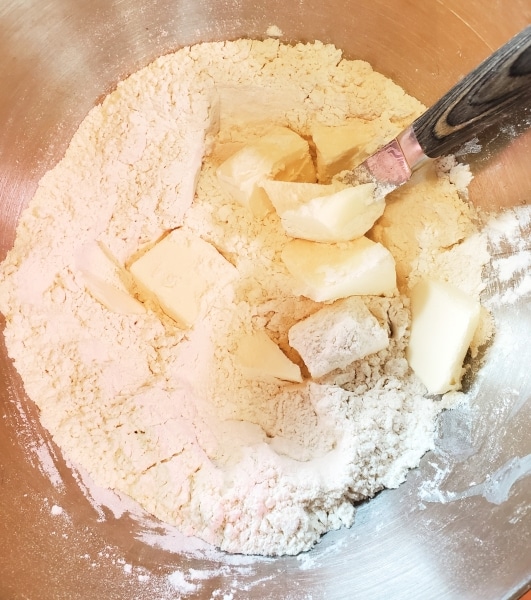
Personally, I think this process would be more efficient if the butter was already sliced when thrown in with the flour.
now add the ice water gradually, lifting with the knife that portion which you have moistened first, and pushing it to one side of the bowl,
This recipe has a different flour/water/butter ratio than I usually use when making pie pie crust.
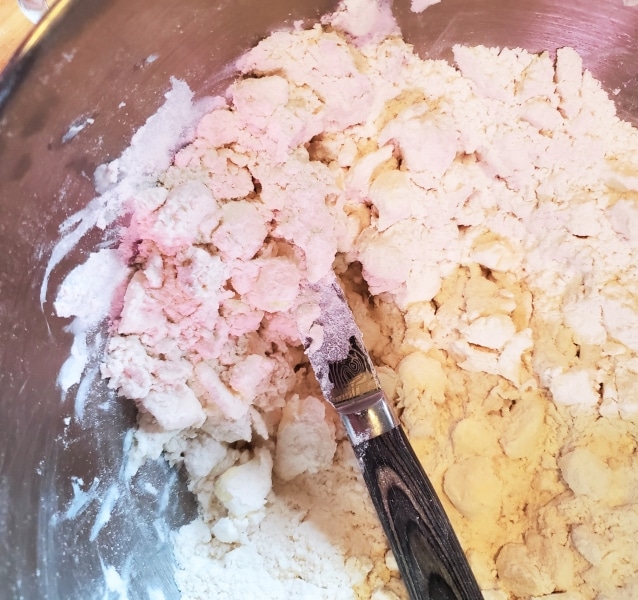
wet another portion and continue until all is moistened. Then cut and mix it together until you can lift it from the bowl with the knife. (A word of caution ; add the water very carefully, wetting only the dry flour, never stirring twice in the same place.)
This is a very slow process. I miss my pastry cutter.
Dredge the baking-board lightly with flour, turn the paste out onto this,
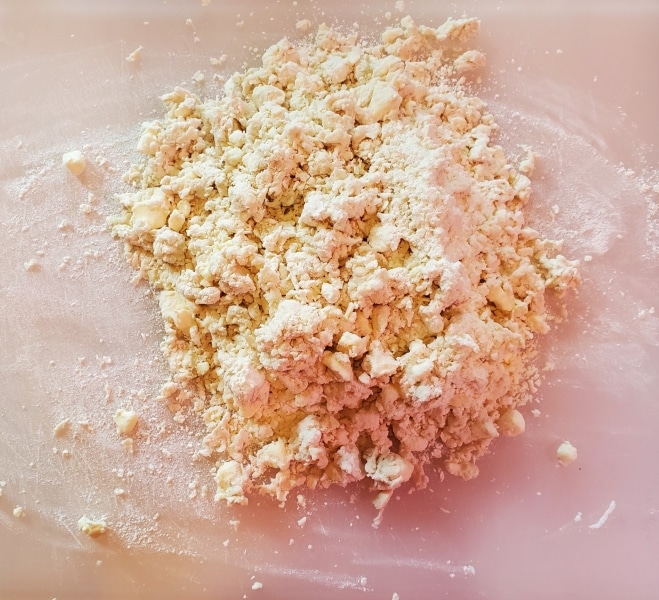
It doesn’t look like pie dough yet.
roll lightly and quickly from you into a long, thin sheet.
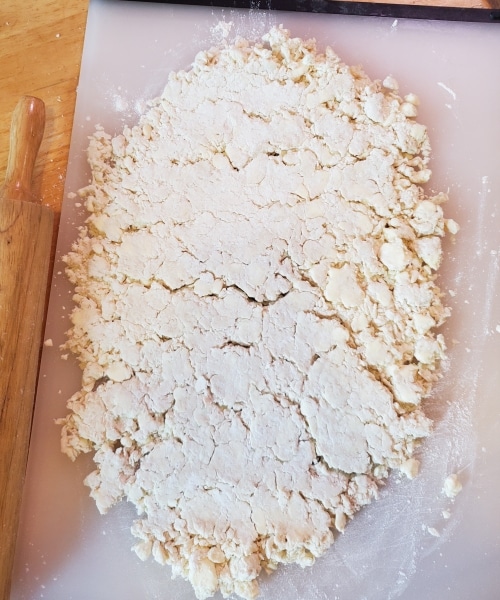
Fold first the sides and then the ends,
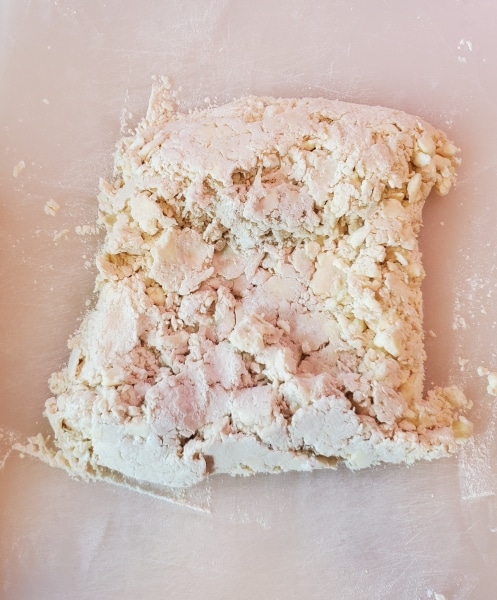
Turn the paste around and roll from you again, as before ; fold and roll again ;
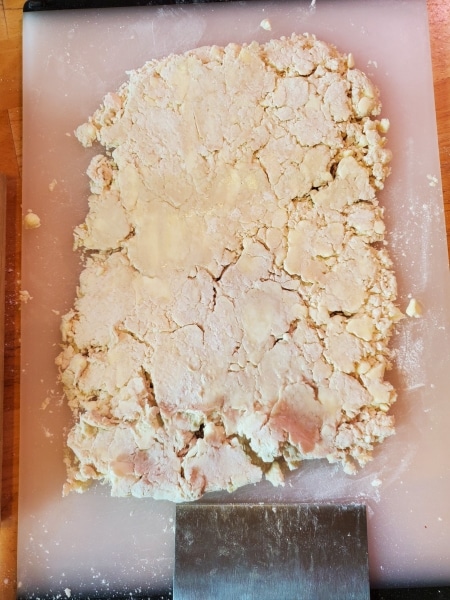
As you can see, the dough is gradually coming together. This process reminds me of making biscuits. Now I want biscuits.
then fold and stand on the ice until wanted.
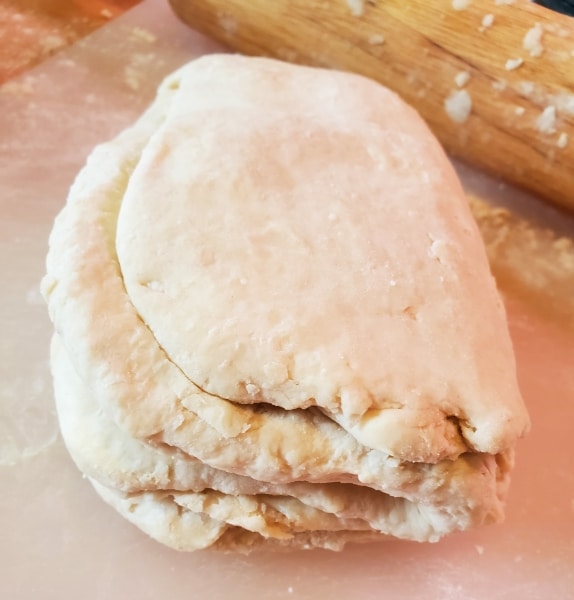
It took a few more rounds of folding and rolling before the dough really came together.
To have this paste a perfect success, the materials should be very cold, mixed and rolled quickly, using as little flour as possible in finishing.
Now that the “paste” is resting in the refrigerator, I can move on to the cheesecake filling.
The ingredients:
1 ½ cups of cottage cheese
2 tablespoonfuls of cream
½ cup of sugar
3 eggs
Juice and rind of a lemon
Or one teaspoonful of vanilla
1 teaspoonful melted butter
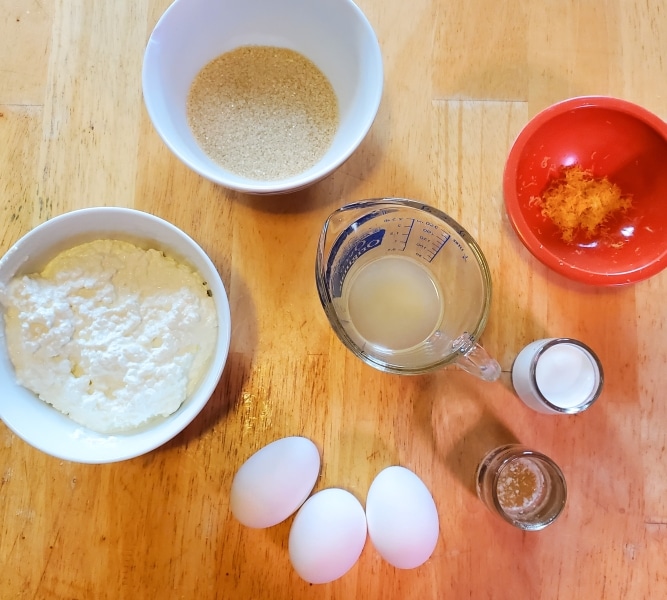
After waffling back and forth for a bit, I decided to go with the lemon option for today’s cheesecake experiment. Since cottage cheese should make for a lighter dessert than cream cheese, the lemon flavor will probably be a good complement.
Press the cheese through a colander,
I assume the goal is to smooth the cheese, so I am going to use a strainer. My colander has fairly large holes—which is good for pasta but probably not for cheese.

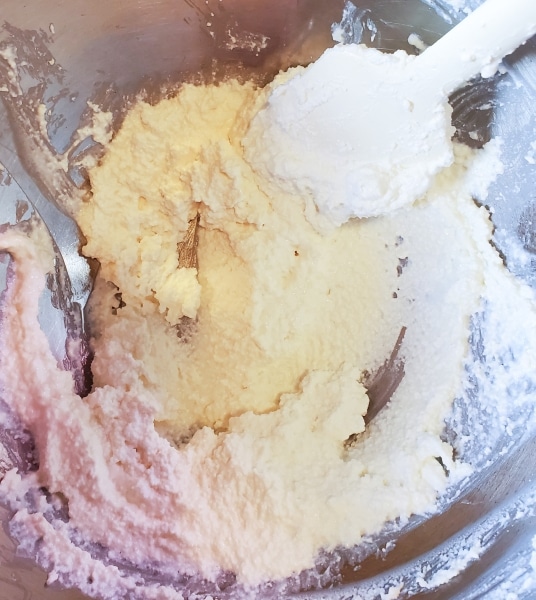
Straining cottage cheese is a very messy and frustrating process. It takes some time to force the cottage cheese all the way through the strainer.
beat the eggs until light,
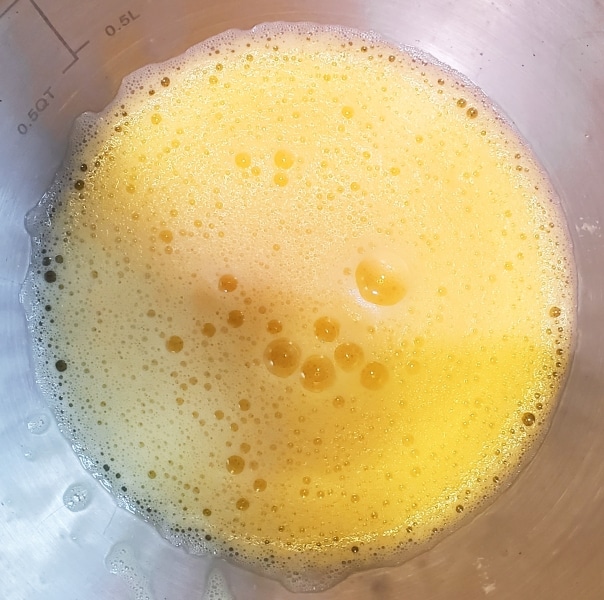
The eggs become lighter in color once they’re foamy.
add them with all other ingredients to the plain cheese ;
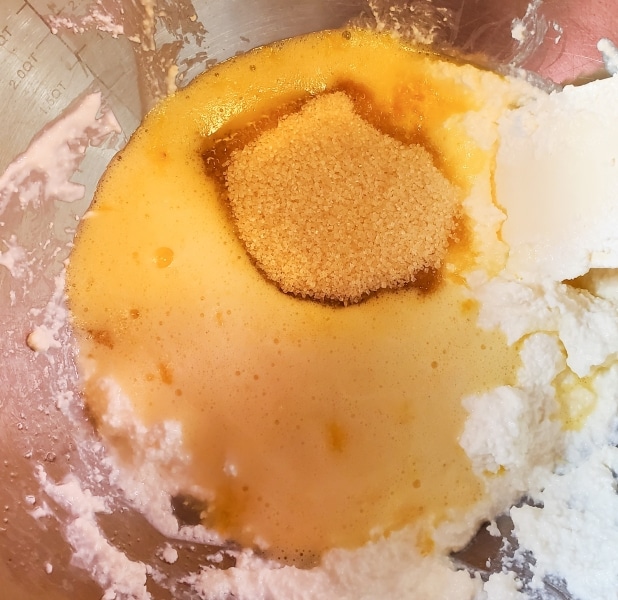
beat until smooth.
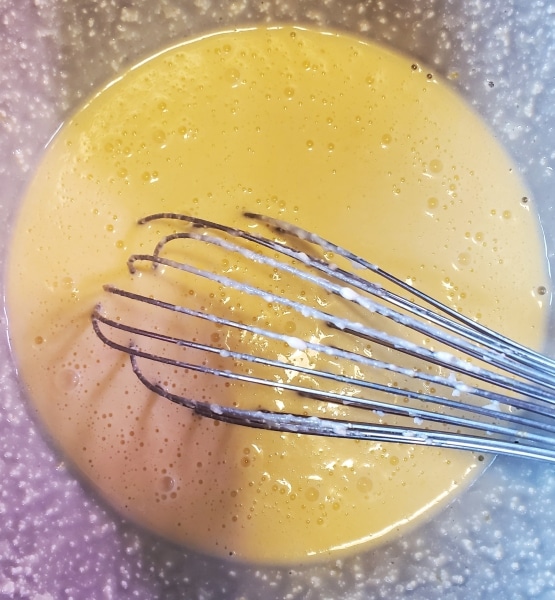
I whisk the mixture as smooth as I can, but some curds remain.
Line a deep pie dish with plain paste, fill with this mixture, and bake in a quick oven for thirty minutes.
The quantities given will make only one pie
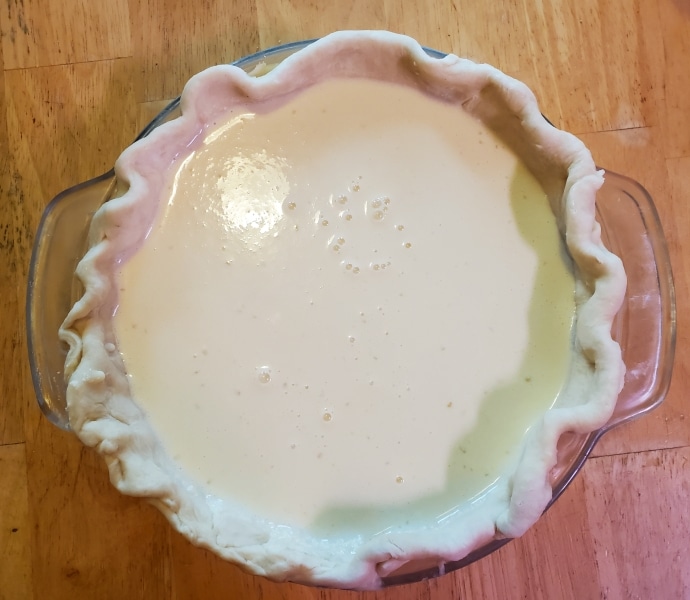
I used about half of the “plain paste” I made earlier, but I’m concerned that the crust won’t be cooked all the way by the time the cheese mixture is set. I’m not entirely sure what temperature a “quick oven” is supposed to be, but I’m hedging my bets with 375°F. I don’t want to bake at too high a temperature and brown the top of the cheesecake before it is cooked.
As it turns out, my guess was probably wrong because at 30 minutes into baking, the filling is still decidedly liquidy. I check on it regularly until a total of 45 minutes have gone by and this happens:
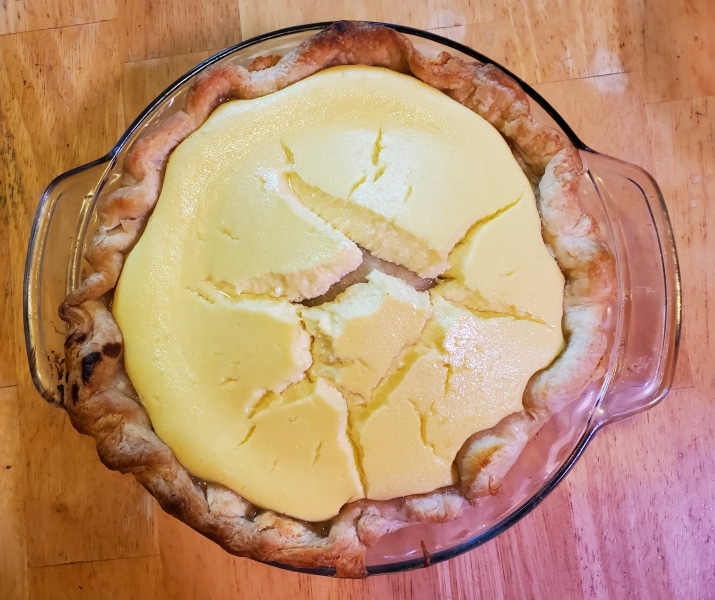
I’m going to assume this is done. This concoction looks weird but not runny any more. I have to wait a couple of hours before it is cool enough to taste.

The cheesecake looks less like a child’s science experiment now that it has cooled and collapsed. It’s surprisingly tasty! The crust turned out flaky even if slightly underdone in the middle, and the filling is light with just the right amount of acidity and sweetness. It’s a lot less dense and somewhat less sweet than traditional New York cheesecake—a perfectly respectable cousin. If you decide to make this at home, I would recommend parbaking your crust before adding the filling.


